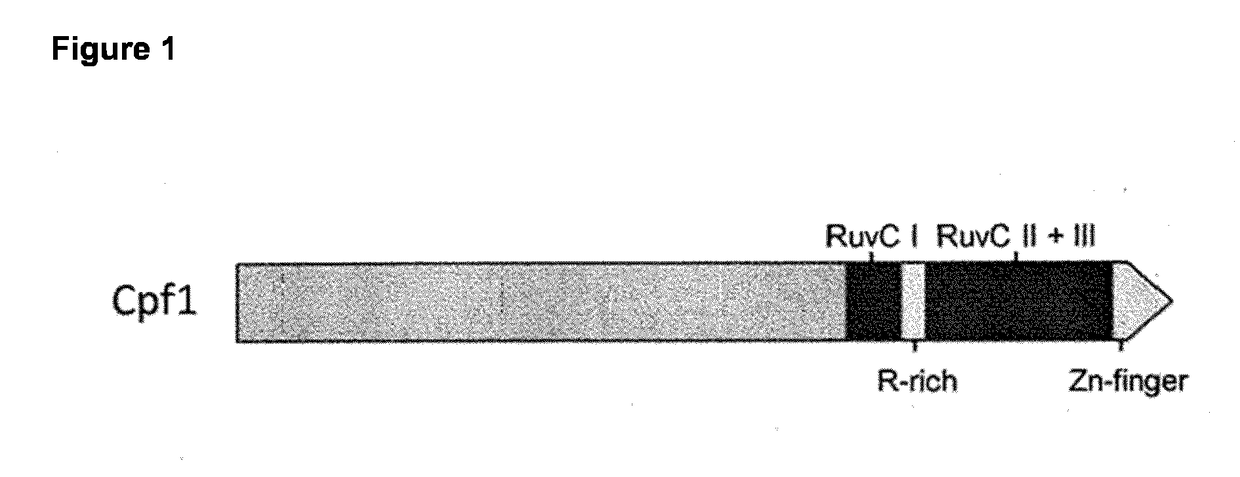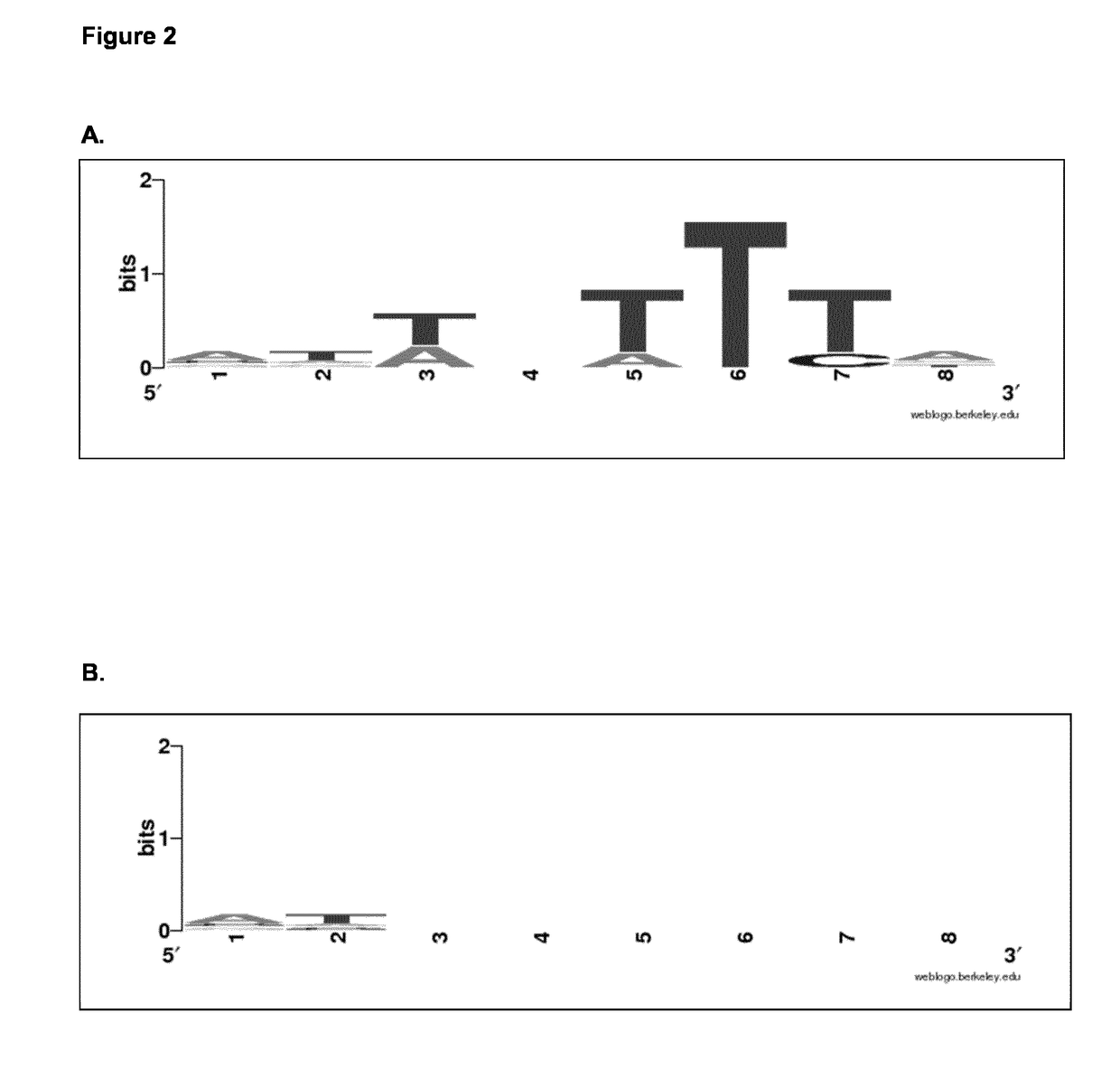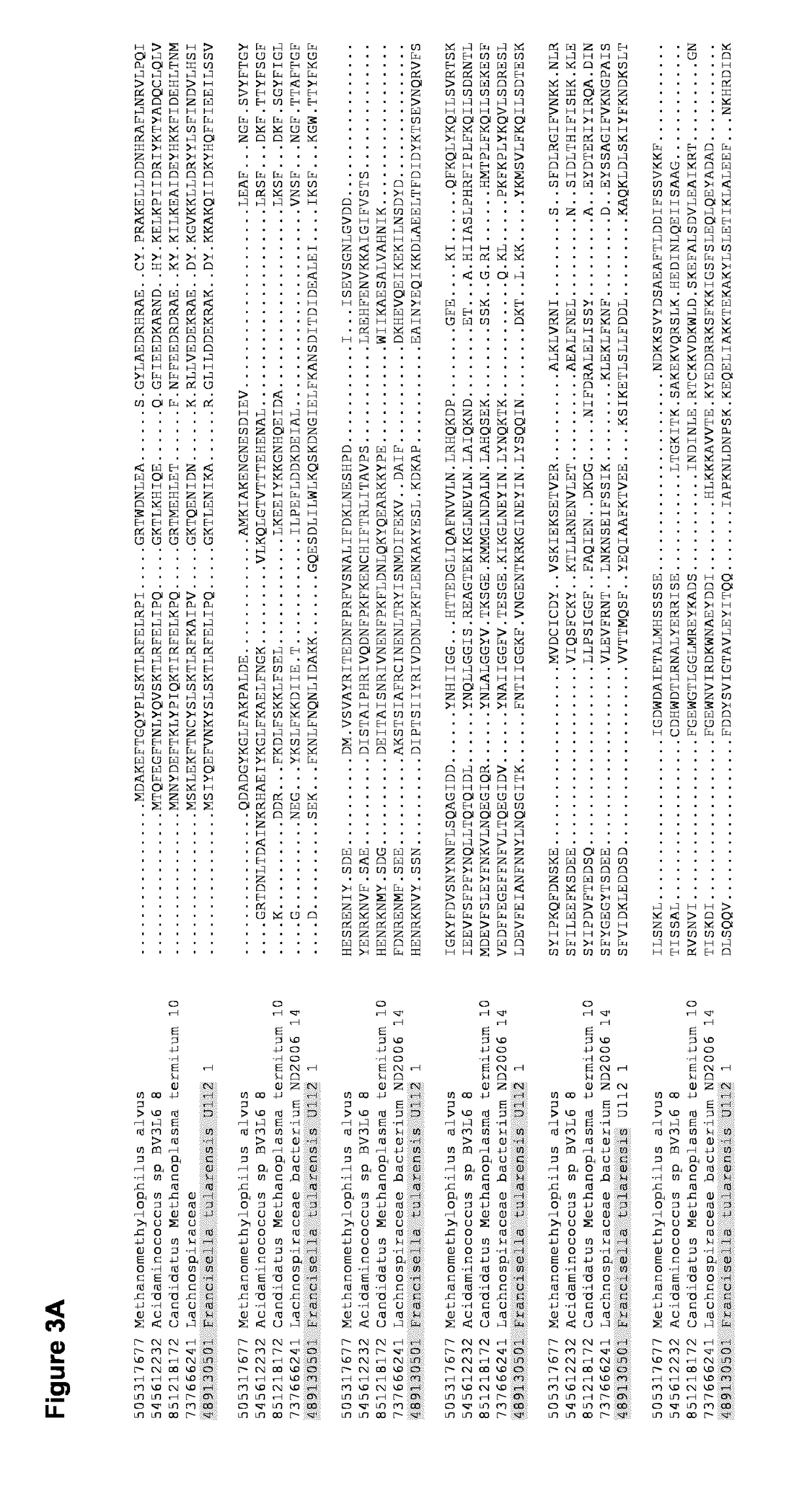Nuclease-mediated genome editing
a genome editing and nuclease technology, applied in the direction of dna/rna fragmentation, hydrolases, biochemistry apparatus and processes, etc., can solve the problems of imposing significant design limitations requiring laborious protein engineering, and requiring pam-requirement. imposes a significant design limitation on the endonuclease system, so as to achieve the effect of reducing the number of cleation
- Summary
- Abstract
- Description
- Claims
- Application Information
AI Technical Summary
Benefits of technology
Problems solved by technology
Method used
Image
Examples
example 1
LEASES FOR GENE EDITING
[0098]Specific examples are (1) CRISPR-associated Cpf1 from the marine bacterium Francisella novicida (Fn-Cpf1), and (2) CRISPR-associated Cpf1 from the archaeon Methanomethylophylus alvus strain Mx1201 (Mal-Cpf1) that resides in the human gut.
[0099]Without the inventors wishing to be bound by any particular theory, Cpf1 recognises the crRNA in a sequence-specific manner, after which cleavage occurs of the double stranded RNA segment, and eventually formation of an effector complex consisting of Cpf1 and a single crRNA guide. Cpf1 may operate as a dimer, with the RuvC-like domains of each of the two subunits cleaving individual DNA strands. Alternatively, Cpf1 may contain more than one nuclease domain which permits cleavage of both DNA strands. Alternatively, one or more RuvC domains of Cpf1 may exhibit unusual flexibility that allows for cleavage of both strands.
[0100]The following examples were performed in parallel for the bacterial Fno-Cpf1 and archaeal Ma...
example 2
AL CHARACTERIZATION OF CPF1 NUCLEASES
[0107]These experiments characterize guide surveillance and target cleavage. The CRISPR system is an adaptive immunity system in bacteria and archaea. The CRISPR arrays consist of identical repeats (e.g. 30 bp) and variable spacers (e.g. 35 bp). The adaptive nature of the CRISPR system relies on regular acquisition of new spacers, often corresponding to fragments (protospacers) derived from viruses. Acquisition generally depends on the selection of a protospacer based on the presence of a protospacer adjacent motif (PAM). The presence of this motif is crucial for the eventual interference by the CRISPR-associated effector complex (e.g. Cas9) with its crRNA guide. The PAM motif allows for self versus non-self discrimination: the potential target sequences (i.e. complementary to the crRNA guide sequence) reside both on the host's genome (the self CRISPR array) as well as on the invader's genome (the non-self protospacer); the presence of the protos...
example 3
[0113]Performing of high-throughput engineering of bacterial genome with nuclease variants. Without wishing to be bound by particular theory, the inventors expect that Cpf1 / guide complexes of the invention allow for specific targeting of genomic DNA. Multiplex targeting can be established by using a design CRISPR together with a matching crRNA.
[0114]The experiments provide application of Cpf1 and variants of the invention. Cas9 is tested in parallel as a reference.
[0115]Gene knock-in / knock-out (insertion / disruption of any sequence) is performed. The host strain E. coli K12 (LacZ+, GFP−) was engineered as follows: the gene encoding a variant of the Green Fluorescent Protein (GFPuv) is inserted in the lacZ gene, resulting in a clear phenotype (LacZ−, GFP+). The cpf1 gene was introduced on a plasmid (or derivatives of those plasmids), together with a fragment that allows for homologous recombination of the target sequence. A target (protospacer) sequence was selected, with a...
PUM
| Property | Measurement | Unit |
|---|---|---|
| affinity | aaaaa | aaaaa |
| composition | aaaaa | aaaaa |
| structure | aaaaa | aaaaa |
Abstract
Description
Claims
Application Information
 Login to View More
Login to View More - R&D
- Intellectual Property
- Life Sciences
- Materials
- Tech Scout
- Unparalleled Data Quality
- Higher Quality Content
- 60% Fewer Hallucinations
Browse by: Latest US Patents, China's latest patents, Technical Efficacy Thesaurus, Application Domain, Technology Topic, Popular Technical Reports.
© 2025 PatSnap. All rights reserved.Legal|Privacy policy|Modern Slavery Act Transparency Statement|Sitemap|About US| Contact US: help@patsnap.com



